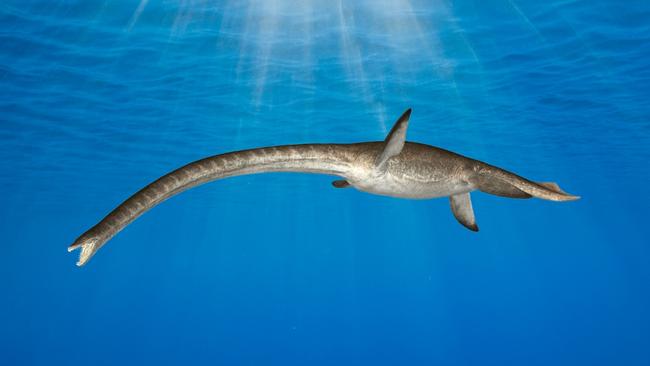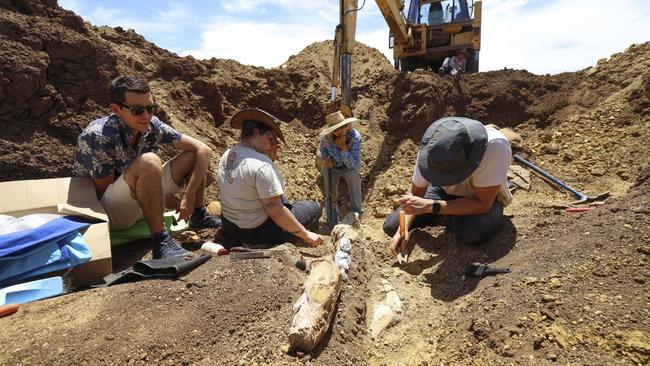Rare find could reveal secrets to Qld’s paleo past
A 100 million-year-old fossil discovered on a Queensland station could hold the key to unlocking the mystery surrounding the state’s prehistoric sea creatures.

QLD News
Don't miss out on the headlines from QLD News. Followed categories will be added to My News.
A rare fossil discovered on a Queensland station by a trio of amateur palaeontologists could hold the key to unlocking the mystery surrounding prehistoric sea creatures in the state.
The exciting find is Australia’s first head and associated body of a 100-million-year-old elasmosaur and was found by Western Queensland station owner Cassandra and her two friends, Sally and Cynthia, who form a fossil hunting group called the ‘Rock Chicks’.

A team of Queensland Museum palaeontologists recently travelled to the remote site to collect the fossil of the elasmosaur, which is a plesiosaur that coexisted with dinosaurs.
Queensland Museum Network senior scientist and curator of palaeontology Dr Espen Knutsen said the find would be the first known head and body of an Australian elasmosaur to be held in a museum collection.
“We were extremely excited when we saw this fossil – it is like the Rosetta stone of marine palaeontology as it may hold the key to unravelling the diversity and evolution of long-necked plesiosaurs in Cretaceous Australia,” Dr Knutsen said.
“We have never found a body and a head together and this could hold the key to future research in this field.

“Because these plesiosaurs were two-thirds neck, often the head would be separated from the body after death, which makes it very hard to find a fossil preserving both together, so we are using CT scanning to give us an insight into these magnificent animals.”
The creature had small turtle-shaped head which along with it’s gigantic neck – about 13 metres – made up about half of its total body length. Elasmosaurus came to the water’s surface to breathe air and crabs, molluscs, and fish.

Along with the new skeleton, there were also several plesiosaurs and ichthyosaurs discovered and collected on the field trip, which will be transported to Townsville for preparation and further research.
Each year the Rock Chicks meet to search for fossils on the property and during this time have walked hundreds of kilometres on their quest to uncover fossils.
Cassandra said the group was looking forward to their 2023 hunt and have a motto of “let’s keep the paleos busy”.




